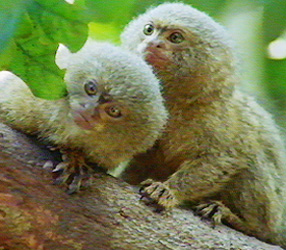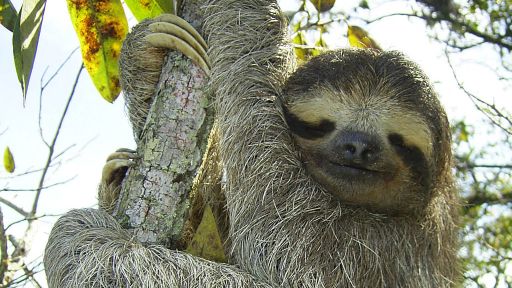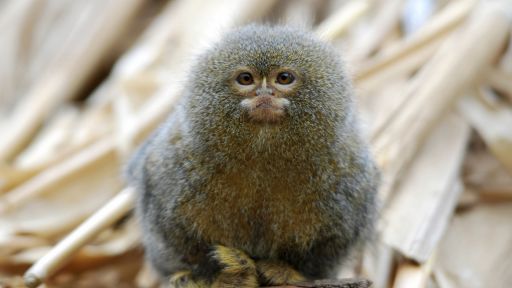The thick foliage and tangled branches of the middle levels of the rainforest provide a good home for marmosets and tamarins. Living halfway between the ground and the treetops, they feast on a variety of fruits and insects among the leaves. As frugivores, or fruit eaters, marmosets and tamarins help cultivate trees by digesting and excreting the seeds of their meals along the forest floor. This seed dispersal helps diverse trees grow throughout the forest. While they may occasionally visit the ground in search of the meaty grubs and insects that live there, marmosets and tamarins swiftly retreat to the high branches at the first sign of danger. Predators like boa constrictors and margays make trips to the ground a risky enterprise, as you can see in GREMLINS: FACES IN THE FOREST.
Marmosets and tamarins, like other species that live in Central and South America, are called New World monkeys. Distinguished by specialized teeth and sharp claws, marmosets sport tails nearly twice the length of their bodies. The monkeys are always on the lookout for the proteins and minerals they need to stay alive, of which fruit and tree sap are good sources. With claws instead of nails and elongated teeth that allow them to gouge holes into tree trunks for the sap within, marmosets are uniquely equipped among monkeys. Adult marmosets claim their favorite sap sources by marking the area with urine. These scent markings also let younger family members know who is boss around the home range. Tamarins, lacking marmosets’ teeth and claws, are not able to dig into tree trunks, so they have developed another way to find important nutrients: they wait for the pods of the parkia tree to ripen and burst open, at which point the animals lick up the sap.
Marmosets and tamarins live in families of as many as 15 monkeys; within this group, only the dominant female gives birth, usually to twins. While newborns weigh only one or two ounces, that’s a lot for a creature of this size: a pair of infants can weigh up to 25 percent of the mother’s body weight, the human equivalent of a mother bearing 15-pound twins. Depending on the species, gremlins weigh from 6 to 13 ounces at full growth. The father is more involved in the birth process than the males of most other species. He assists during labor by biting off the umbilical cord and cleaning up the afterbirth. After the babies are born, the father tends to the newborns whenever they are not nursing, giving the infants’ mother a chance to rest. No scientist fully understands why marmoset and tamarin males are more involved than other monkey fathers. Infants learn hunting and survival skills from their relatives, building a close family relationship by grooming one another. Grooming strengthens social bonds, which are especially important if another monkey group invades and starts a fight over territory. After 12 weeks, the newborns become independent.











